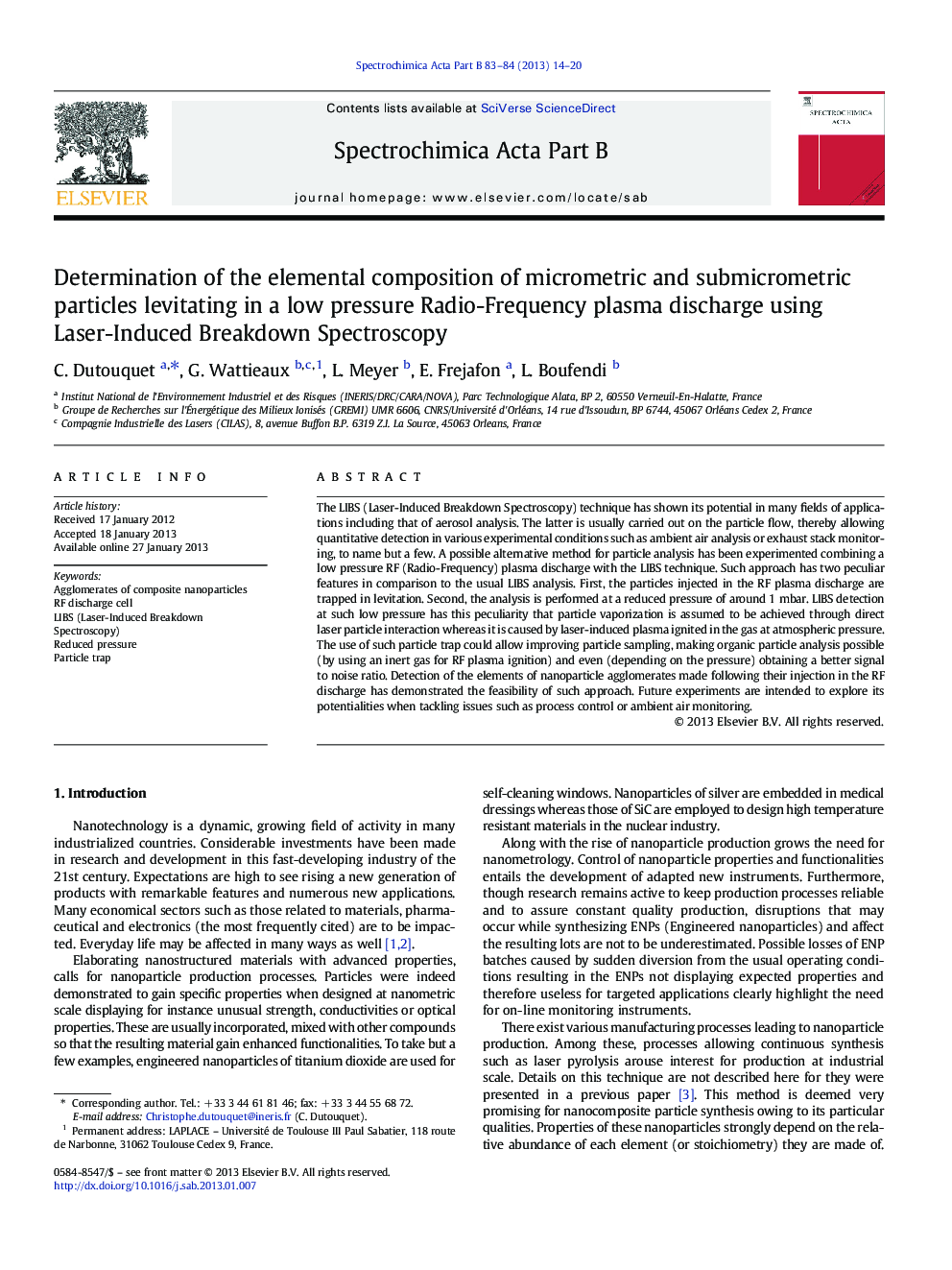| Article ID | Journal | Published Year | Pages | File Type |
|---|---|---|---|---|
| 1239995 | Spectrochimica Acta Part B: Atomic Spectroscopy | 2013 | 7 Pages |
The LIBS (Laser-Induced Breakdown Spectroscopy) technique has shown its potential in many fields of applications including that of aerosol analysis. The latter is usually carried out on the particle flow, thereby allowing quantitative detection in various experimental conditions such as ambient air analysis or exhaust stack monitoring, to name but a few. A possible alternative method for particle analysis has been experimented combining a low pressure RF (Radio-Frequency) plasma discharge with the LIBS technique. Such approach has two peculiar features in comparison to the usual LIBS analysis. First, the particles injected in the RF plasma discharge are trapped in levitation. Second, the analysis is performed at a reduced pressure of around 1 mbar. LIBS detection at such low pressure has this peculiarity that particle vaporization is assumed to be achieved through direct laser particle interaction whereas it is caused by laser-induced plasma ignited in the gas at atmospheric pressure. The use of such particle trap could allow improving particle sampling, making organic particle analysis possible (by using an inert gas for RF plasma ignition) and even (depending on the pressure) obtaining a better signal to noise ratio. Detection of the elements of nanoparticle agglomerates made following their injection in the RF discharge has demonstrated the feasibility of such approach. Future experiments are intended to explore its potentialities when tackling issues such as process control or ambient air monitoring.
► Agglomerated composite nanoparticles are maintained in levitation within a trap. ► The trap consists in a low pressure Radio-Frequency (RF) plasma discharge. ► Particles are analyzed using Laser-Induced Breakdown Spectroscopy (LIBS). ► The analysis is done at RF discharge reduced pressure, namely 0.25 mbar.
